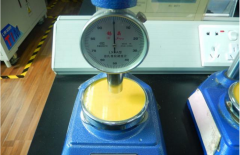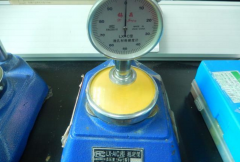Thermal silicone pad is widely used, such as: filling cooling device, communication hardware, automobile control unit, LED lighting equipments, PDP display screen, etc. In these applications, the thermal silicone pad will produce certain compression to fill the gap, so as to achieve good heat conducting effect. The hardness of the thermal silicone pad directly reflects the hardness and softness of it, and its size will affect the compression performance of the product, which is a very important parameter. Many people have doubts about the hardness when they choose the thermal silicone pad, so I will introduce the hardness of the thermal silicone pad.
1. What is the concept of hardness?
Hardness is a mechanical property index that all kinds of mechanical parts and tools must have. It is used to characterize the hardness and softness of materials. It refers to the ability of materials to resist local deformation, especially plastic deformation, indentation or scratch.
2. What is the hardness of the heat conducting gasket?
There are different hardness standards because of different test methods. Different hardness standards have different mechanical meanings, which can not be directly converted to each other, but can be compared by tests. Common hardness by test methods are: scratch hardness, indentation hardness, rebound hardness. According to the specific hardness name classification: Rockwell hardness, Brinell hardness, Richter hardness, Shore hardness, etc.
According to ASTM D2240 《Standard Test Method for Rubber Hardness by Hardness Tester》, the hardness of thermal silicone pad is expressed by shore hardness. The measuring instruments corresponding to shore hardness are shore hardness meter, which are mainly divided into three types: type A, type C and type 00. The measuring principle is exactly the same, the difference is that the size of the measuring needle, especially the tip diameter. Type 00 is the largest and type A is the smallest. The shore A hardness meter is suitable for measuring the harder thermal silicone pad, and the Shore 00 hardness tester is suitable for measuring the softer one.
Shore hardness belongs to indentation hardness. The test method is to insert the tested material with a shore hardness tester. The pointer on the dial is connected with a needle through a spring. The needle is inserted into the surface of the tested object. The value displayed on the dial is the hardness value.
The following are commonly used hardness meter:
Shore 00 hardness meter

Shore A hardness meter

Shore C hardness meter

3. Is it better to have a high hardness or a low hardness for thermal silicone pad?
The lower the hardness is, the softer the product is, and the higher the compression ratio is,and it is suitable for use in low stress environment. On the contrary, the higher the hardness of thermal silicone pad is, the harder the product is, and the lower the compression ratio is. Under the same application conditions, compared with the products with high hardness, the products with low hardness have higher compression rate, shorter heat conduction path, shorter heat transfer time and better heat conduction effect.
However, it’s not that the lower the hardness, the better. The thermal silicone pad needs to have a certain hardness to avoid deformation. Generally speaking, thermal silicone pad with higher hardness has better mechanical properties. In the application, it is necessary to select the heat conduction gasket with proper hardness according to the actual situation.
